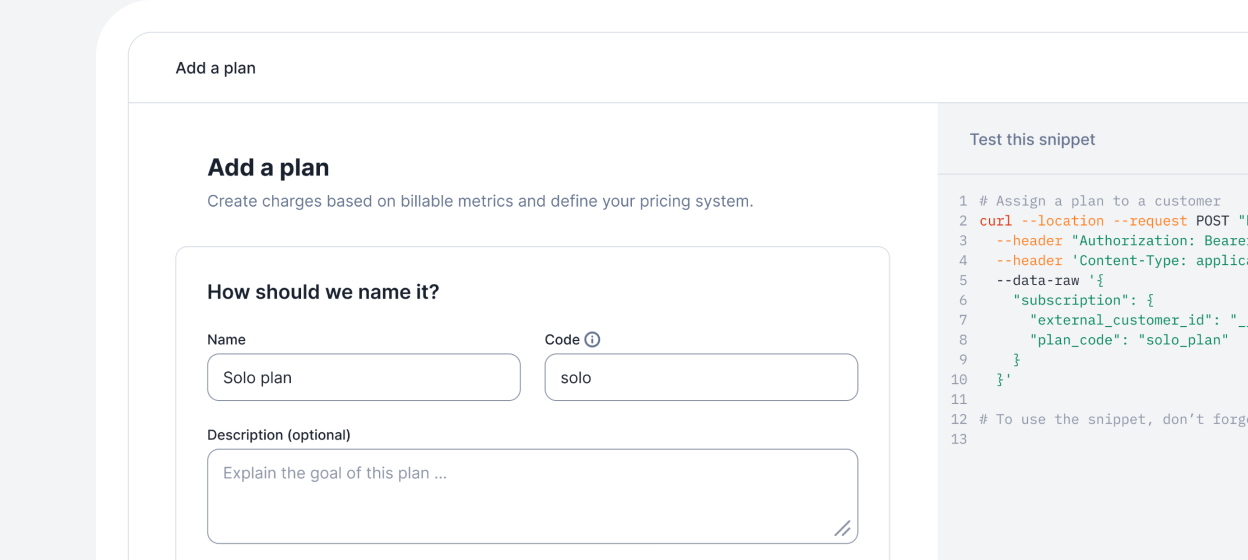What is enterprise billing and how does it work?

For small companies, invoice or billing errors are fixable. It affects few customers and the amounts are small. But enterprises can't afford billing mistakes. As transaction volume and pricing complexity increase, legacy or homegrown billing systems often become a significant source of engineering drag and financial inaccuracy. An enterprise-grade billing system is not merely an operational upgrade; it is a foundational component of your infrastructure that directly impacts revenue, scalability, and customer trust.
This guide provides architectural and functional clarity on enterprise billing for SaaS, focusing on the capabilities required to support complex pricing models like metered billing, automate the quote-to-cash cycle, and ensure compliance at scale.
The Architectural Shift: From Standard to Enterprise SaaS Billing
Standard billing software is architected for simple, recurring transactions and fixed pricing tiers. It falters when faced with the dynamic nature of modern SaaS, such as introducing usage-based pricing, expanding globally, or managing complex revenue recognition rules. Enterprise billing platforms are architected from the ground up to handle this complexity, providing the flexibility and scalability necessary for growth.
The fundamental difference lies in their architecture and capabilities. Standard systems often lack the API-first design needed to ingest and process high-volume event data for accurate metered billing. This forces engineering teams to build and maintain brittle, manual workarounds, increasing the risk of billing errors and delaying time-to-market for new pricing strategies. Enterprise systems, by contrast, are built to thrive in this dynamic environment. Effective project management for engineers becomes essential to coordinate these complex billing implementations and minimize disruptions.
Core Capabilities of an Enterprise-Grade SaaS Billing Platform
When evaluating an enterprise billing solution, look beyond basic invoicing. The platform must provide a robust set of interconnected capabilities that support product-led growth, financial operations, and technical scalability.
Flexible Pricing and Metering Engine
The ability to experiment with and deploy sophisticated pricing models is critical for maximizing revenue. An enterprise platform must provide native support for metered billing for SaaS, allowing you to charge based on any unit of value—API calls, data storage, compute hours, or active users.
This requires an event-based architecture capable of ingesting, aggregating, and rating millions of usage events accurately and in real-time. Key features include:
- Diverse Billing Models: Support for subscriptions, usage-based (metered) pricing, tiered plans, per-seat models, and custom hybrid configurations.
- Automated Invoicing: Automatically generate accurate, itemized invoices based on customer plans and real-time usage data. This reduces manual effort and billing errors, directly accelerating time-to-cash.
- Customer Usage Tracking: Provide both internal teams and end-customers with real-time visibility into consumption against plan limits or prepaid credits. This transparency builds trust and can drive upsell opportunities.
Financial Automation and Compliance
Automating the entire revenue lifecycle is essential for operational efficiency and financial accuracy. An enterprise billing platform should streamline processes from quote to revenue recognition.
- Dunning Management: Automated dunning workflows for handling failed payments, including customizable email sequences and payment retries, can significantly reduce involuntary churn.
- Revenue Recognition: Built-in compliance with accounting standards like ASC 606 and IFRS 15 ensures that revenue is recognized correctly, simplifying audits and financial reporting.
- Global Tax & Regulatory Compliance: The system must automate tax calculations across multiple jurisdictions and stay current with data privacy regulations (e.g., GDPR, CCPA) to de-risk international expansion.
Extensible Architecture and Integrations
A modern billing system cannot operate in a silo. It must serve as the financial hub of your tech stack, seamlessly integrating with other critical systems.
- API-First Design: A comprehensive, well-documented API is non-negotiable. It allows engineering teams to integrate billing logic directly into the product, automate provisioning, and build custom workflows.
- System Integrations: Look for native integrations with your CRM (e.g., Salesforce), ERP (e.g., NetSuite), and accounting software. This ensures data consistency across sales, finance, and engineering, eliminating manual reconciliation.
- Data Warehouse Connectivity: The ability to sync billing data with a data warehouse like Snowflake, BigQuery, or Redshift enables deeper financial analysis and provides a unified view of customer and revenue data.
Security and Customer Experience
Protecting sensitive customer data and providing a transparent billing experience are paramount for building long-term relationships.
- Enterprise-Grade Security: The platform must be compliant with industry standards such as PCI DSS and SOC 2, featuring end-to-end data encryption to protect payment and personal information.
- Self-Service Portals: Empower customers with a portal where they can view usage, download invoices, update payment methods, and manage their subscriptions. This reduces the burden on your support team and improves customer satisfaction.
Evaluating and Implementing a SaaS Billing Solution
Choosing the right billing platform is a strategic decision that impacts the entire organization. The evaluation process should be rigorous and led by a cross-functional team of engineering, product, and finance stakeholders.
Technical Needs Assessment and Evaluation
Begin by outlining your specific technical and business requirements.
- Analyze Pricing Models: Document your current pricing structures and any future models you plan to implement, such as metered billing, prepaid credits, or custom enterprise contracts.
- Evaluate Scalability: Estimate your current and projected event volume. Can the platform handle your peak data ingestion needs without performance degradation?
- Assess Integration Needs: Map out the required integrations with your existing tech stack (CRM, ERP, data warehouse, etc.). Review the quality and completeness of the vendor's API documentation.
- Prioritize Security and Compliance: Verify the vendor's compliance certifications (SOC 2, PCI DSS) and their capabilities for handling global tax and data privacy requirements.
The Case for Open-Source and Developer-Centric Platforms
For engineering-driven organizations, an open-source, API-first billing platform like Lago (getlago.com) offers significant advantages over closed, proprietary systems. Lago is designed specifically for developers and product teams who require maximum flexibility and control over their billing infrastructure.
Its core differentiators include:
- Open-Source Core: Eliminates vendor lock-in and provides full transparency into the billing logic. Engineering teams can inspect, extend, and customize the platform to meet unique business needs.
- Event-Based Architecture: Built from the ground up to handle high-volume metered billing, Lago can accurately ingest and aggregate usage data from any source.
- Developer-First Experience: With a focus on a clean API and comprehensive documentation, Lago enables engineers to implement complex billing logic quickly, reducing time-to-market for new pricing initiatives.
- Flexible Deployment: While offered as a fully managed cloud solution, Lago also provides a self-hosted option for enterprises with specific data residency or security requirements, offering ultimate control over the infrastructure.
By adopting a modern, extensible billing platform, you transform billing from a back-office cost center into a strategic lever for growth. The right system provides the agility to monetize any feature, the automation to scale financial operations efficiently, and the data insights needed to drive higher Net Revenue Retention (NRR) and faster, more predictable growth.
Meta Description
Discover how enterprise-grade SaaS billing systems enable flexible metered pricing, automate revenue cycles, and ensure scalability for maximized growth and trust.
Focus on building, not billing
Whether you choose premium or host the open-source version, you'll never worry about billing again.
Lago Premium
The optimal solution for teams with control and flexibility.

Lago Open Source
The optimal solution for small projects.

